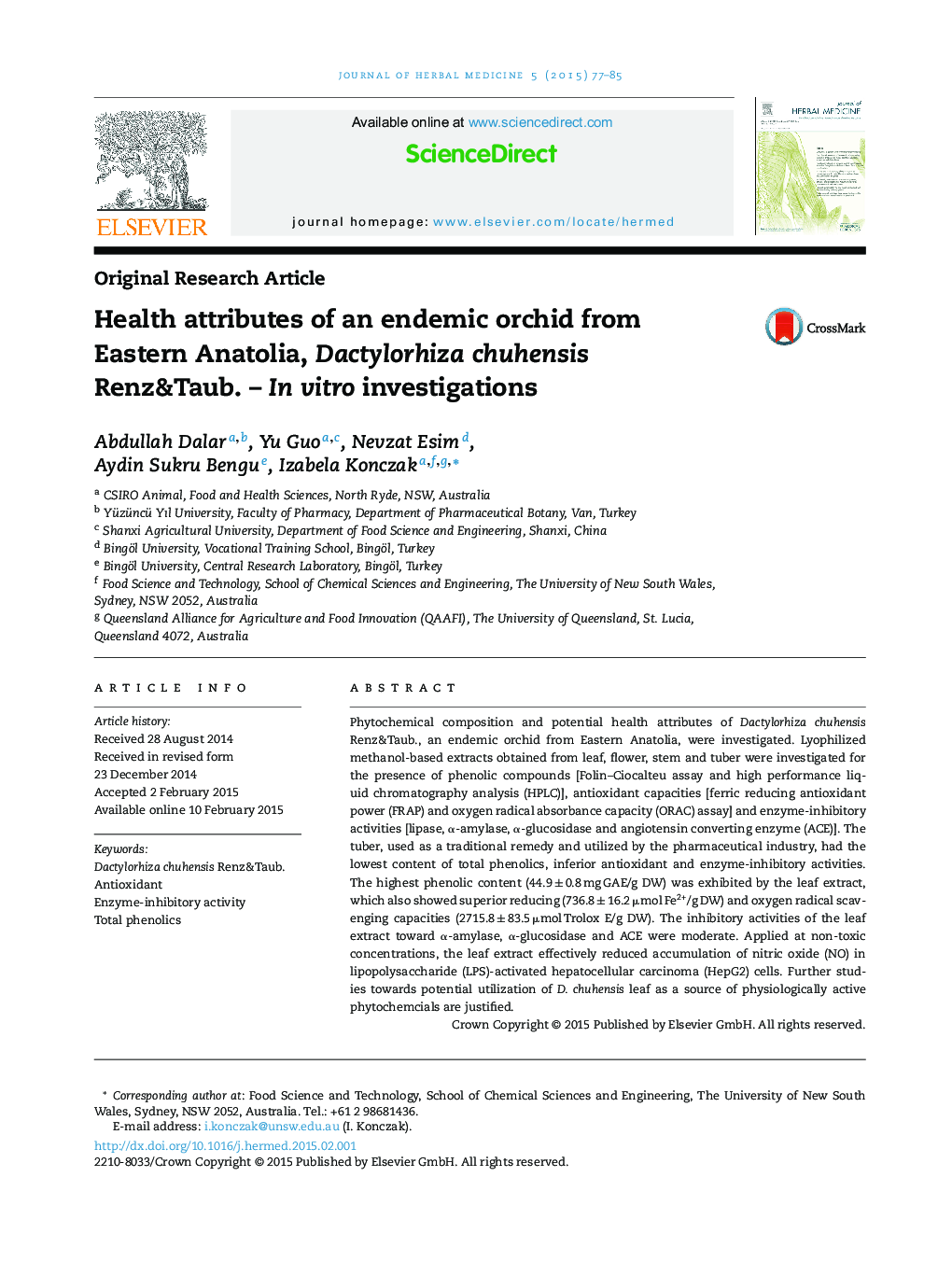| Article ID | Journal | Published Year | Pages | File Type |
|---|---|---|---|---|
| 2484101 | Journal of Herbal Medicine | 2015 | 9 Pages |
•Dactylorhiza chuhensis leaf extract has moderate enzyme inhibitory activities.•D. chuhensis leaf extract exhibits anti-inflammatory properties.•The leaf of D. chuhensis can serve as a source of physiologically active phytochemicals.
Phytochemical composition and potential health attributes of Dactylorhiza chuhensis Renz&Taub., an endemic orchid from Eastern Anatolia, were investigated. Lyophilized methanol-based extracts obtained from leaf, flower, stem and tuber were investigated for the presence of phenolic compounds [Folin–Ciocalteu assay and high performance liquid chromatography analysis (HPLC)], antioxidant capacities [ferric reducing antioxidant power (FRAP) and oxygen radical absorbance capacity (ORAC) assay] and enzyme-inhibitory activities [lipase, α-amylase, α-glucosidase and angiotensin converting enzyme (ACE)]. The tuber, used as a traditional remedy and utilized by the pharmaceutical industry, had the lowest content of total phenolics, inferior antioxidant and enzyme-inhibitory activities. The highest phenolic content (44.9 ± 0.8 mg GAE/g DW) was exhibited by the leaf extract, which also showed superior reducing (736.8 ± 16.2 μmol Fe2+/g DW) and oxygen radical scavenging capacities (2715.8 ± 83.5 μmol Trolox E/g DW). The inhibitory activities of the leaf extract toward α-amylase, α-glucosidase and ACE were moderate. Applied at non-toxic concentrations, the leaf extract effectively reduced accumulation of nitric oxide (NO) in lipopolysaccharide (LPS)-activated hepatocellular carcinoma (HepG2) cells. Further studies towards potential utilization of D. chuhensis leaf as a source of physiologically active phytochemcials are justified.
